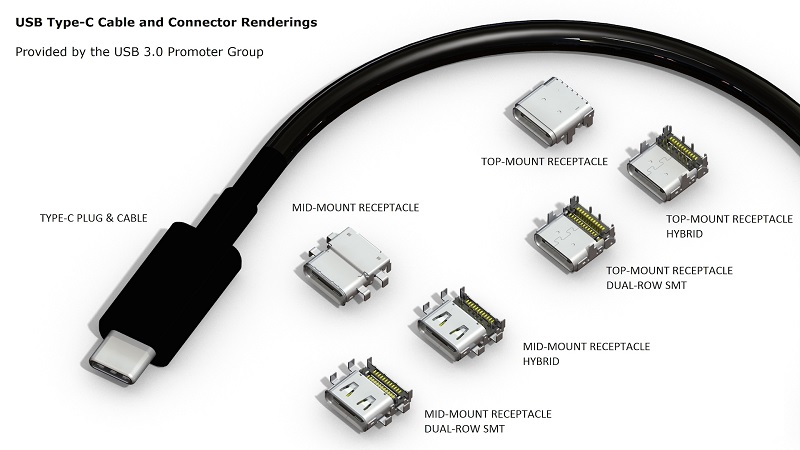Cables, although for many it may seem, are never the same. And the USB Type C would not be less. In addition to the standard used, own manufacturing quality affects performance and even it up. So, calmly, we will see all about USB cables type C.
To begin the first thing is to review some concepts and differences must be known. And you may know but not everyone is advanced user or has taken to investigate what offers this new type of cables.

USB C is not a new standard, is a new connector
Maybe, but some still confuses C USB connector with the advantages of the latest USB 3.1 specification. And the truth is just a new connector. Yes, that offers advantages. The first being reversible but the rest already depends on whether to adopt one or the other standard.
Therefore, you can purchase a cable with USB connectors C but did not get any additional benefit level performance over microUSB cables. This is because there are manufacturers like OnePlus to take the connector by the advantage of being reversible but they do implement the USB 2.0 specification.
Thus, in summary mode, USB C is only one connector, compatible with the new USB standard and also backward compatible with previous. Using adapters can connect our existing USB devices.
Different versions of the USB standard
The USB standard has different versions and as has been updating its considerable improvements were made. Each level defines the characteristics of software and electrical. So, what if we make a brief review of each of its versions and the main features or improvements made.
|
USB 1.0 |
USB 2.0 |
USB 3.0 |
USB 3.1 |
|
|
Data Transfer Rate |
12Mbps |
480 Mbps |
5Gbps |
10Gbps |
USB 1.0, although the first version used was 1.1, allows data transfers at a rate of 12Mbps. Right now we seem to data laughter in the beginning but got popularize many more useful devices with a connector that hitherto available. And with the advantage of plug and play.
USB 2.0 is still the most widely used and popular version. It was introduced in 2000 and improved significantly in the first version. Thanks to USB, although there are faster alternatives, we managed to transfer data at a maximum speed of 480Mbps. In addition to that allows the loading of devices with which is capable of providing a power of 2.5W (5V and 500mA).
You may also like to read another article on YellowTube: The 8TB of this external drive Seagate are fed only by the USB-C
USB 3.0 without a doubt the number one current option. If your device supports you should ensure that all your external storage units are at least USB 3.0. It enables speed and maximum theoretical transfer rates of up to 5Gbps. In addition to a power of 4.5W (5V and 900mA).
USB 3.1 is an update of the previous one in that has managed to double some data. For example, it allows twice faster transfers, exactly 10Gbps. In addition, it can handle larger amounts of energy. This allows you to charge devices that require only 5V or other more demanding because they will reach a maximum power of 100W. That’s why the new MacBook laptops as Apple can be loaded directly via its USB connector C or the last disc of Seagate can be fed only with a USB cable C.
Although we mentioned that USB 3.1 devices can load the truth is that thanks to the implementation of USB Power Delivery, a specification from which you can get more information.
C USB 3.1 and USB standard
You mentioned that the Apple MacBook or Seagate’s latest album is loaded or operated by simply connecting USB cable C. This is so but only because the USB 3.1 standard support. This is important to know and what will make a difference and other aspects to consider.
Thanks to the USB connector C and the joint use of the USB 3.1 standard can have all the advantages of both. But we can also implement USB 3.1 connectors as USB A, USB B, USB Micro B, etc.
In addition to charging, USB C also offers new features such as its ability to transmit a video with resolution up to 4K. And Intel announced last year, also integrate Thunderbolt connection 3.
